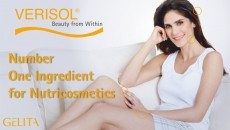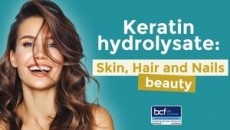Beauty with biotics: skin microbiome science must catch up with growing category

Speaking during a panel discussion at the event in Milan, Dr. Cristiana Piangiolino, general manager at the probiotic manufacturer SynBalance, emphasised the growing interest in the skin microbiome.
“The majority of literature over the last ten years has been collected with regards to infectious diseases of the skin and its relation with the microbiome,” Piangiolino explained. “But recently there has been a growing number of research relating to both the gastrointestinal microbiome and the skin microbiome with things like body odour, anti-wrinkle and anti-ageing.
“There are several new applications that have been touched on by the nutraceutical and nutricosmetics industries. So, the interest is growing and it is spreading across multiple modes of use such as supplements, topical products, and cosmetics,” she added.
Margherita Patrucco, product developer at Probiotical, stressed that beauty products represent a strong area of opportunity for biotics.
“One of the biggest trends for this category will be for beauty. Products can not only offer coverage, but also beneficial effects for skin health. Postbiotics would be an effective option for skin-barrier protection and also for inflammation, as well as to enhance skin complexion.”
She noted scalp care as a further prevalent trend, with significant opportunities for biotics to reduce inflammatory scalp issues.
She said products could also target hair loss prevention and enhanced growth, as well as feminine care including for vaginal health and topical products to reduce inflammation following hair removal.
Category challenges
Dr. Chris Callewaert, senior post-doctoral researcher at Ghent University, asserted that every major brand now seems to be doing something with the skin microbiome, but argued the research is lagging behind the marketing.
“Often brands will just add probiotics to a product without knowing the effect and they just think it is healthy. So we need the science to catch up, and more clinical trials on beauty areas.”
Dr. Johanna Maukomen, director of global clinical innovation and translation at IFF, added that many of the EU member states are still not even allowed to us the term ‘probiotic’ on products there, "even if there is the science, the communication about the science is much more difficult to convey”.
The panellists agreed that communication was a significant challenge for the category, leading to a lack of consumer understanding.
Marie Drago, chief creative officer at the microbiome skincare brand Galinee, agreed but said interest was very high as long as the product was effective for the consumer.
Biotic benefits
Piangiolino suggested consumers do want to know how the product works, even if the literature is confusing.
“I think brands need to move towards providing a mechanism of action,” She argued.
She explained the established benefits of probiotics for skincare.
“As probiotics are defined as live strains, they can have an immediate and long-term effect because they can colonise and persist,” she asserted. “They can interact with the resident species and promote the shift from a pathogenic signature to a more healthy one.”
Discussing other biotics, she said that prebiotics can be utilised within an array of different applications and combined with pro or postbiotics.
“Postbiotics are a challenging subject, because the definition includes many different products, from inactivated bacteria to their metabolites,” she added. “So it’s a wide category but it is versatile when it comes to formulation.”
Maukonen highlighted that postbiotics may offer a solution to the challenges associated with probiotic formulations, such as textural issues in topical creams, whilst overcoming shelf-life limitations and temperature and humidity storage constraints.
Regulatory challenges
Piangiolino noted the stark differences in the regulation between nutraceuticals and cosmetics.
“For food supplements there are very strict regulations around health claims,” she explained. “And in terms of labelling, companies are obliged to indicate at least the species, and in some countries, the specific strains.
“But in the cosmetics industry, I do not see as many strict limits in terms of communicating to consumers,” she added.
She asserted that further information on the compositions of the products and mechanism of action would help consumers to distinguish products.











